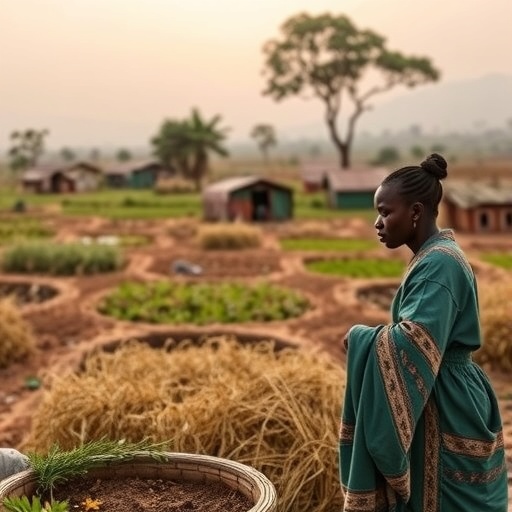In the heart of Ethiopia’s Borena district, a unique narrative unfolds that highlights the challenges faced by rural landless households. This district, located in the Amhara region, serves as a microcosm for understanding the complex interplay between poverty, land ownership, and livelihood strategies. Landlessness is not merely an economic impediment; it is a multifaceted issue that intertwines social dynamics, cultural practices, and local governance structures, making it crucial to address these challenges comprehensively.
The study conducted by Abate and Getahun sheds light on how landless households navigate their existence in rural Ethiopia. These households often depend on a variety of strategies to sustain their livelihoods, which may include casual labor, petty trade, and remittances. Casual laborers represent a significant proportion of the workforce in these communities, engaging in agricultural tasks, construction, and other informal jobs that offer temporary relief from economic hardship. The volatility of such work underscores the inherent instability faced by landless families, making them vulnerable to economic shocks.
Petty trade also emerges as a vital source of income for many landless families. By selling goods such as food items, clothing, or crafts, they can generate sufficient revenue to meet basic needs. However, the challenges associated with entering the market, such as limited access to capital and training, often curtail the potential for growth and sustainability. The informal nature of this trade further complicates their economic position. Without legal recognition, these businesses remain precarious, reliant on the ebb and flow of consumer demand.
Remittances from family members who migrate to urban centers or foreign countries tend to supplement the meager incomes of these households. This financial lifeline provides a buffer against poverty but often creates a paradox where dependence on external income sources can hinder the development of local economies. Households become trapped in a cycle of reliance, where aspirations for advancement may be stifled by the lack of opportunities at home.
Moreover, the community dynamics play a critical role in shaping the livelihood strategies of landless households. Social networks, often built on kinship and neighborly ties, facilitate access to resources, information, and assistance. These social connections can provide informal support systems that help families weather financial storms. Yet, with increasing land pressure and competition over resources, these networks may also become strained, leading to tensions within the community.
The study emphasizes educational access as a pivotal factor influencing the livelihood options available to landless households. Educational attainment, particularly among women, propels families toward diversified income strategies. With education, individuals are better equipped to seek job opportunities beyond traditional labor. However, systemic barriers such as inadequate infrastructure, cultural attitudes toward education, and economic constraints continue to impede progress in this area.
Furthermore, local governance structures can either exacerbate or mitigate the hardships experienced by landless households. Policies that promote inclusive economic development, secure land rights, and enhance access to social services are essential to uplift these communities. Yet, inconsistency in governance, political instability, and corruption contribute to the marginalization of the landless. Advocating for policy changes that prioritize the needs of these households is essential for long-term sustainability.
As this complex situation in Borena unfolds, it is critical to adopt a holistic approach that addresses not only economic needs but also social and political dimensions of landlessness. Interventions must focus on empowering landless households, providing them with the tools and resources needed for self-sufficiency and resilience. By investing in education, improving labor market access, and promoting sustainable agricultural practices, stakeholders can help create an environment where all families have the opportunity to thrive.
In conclusion, the livelihood strategies of landless households in rural Ethiopia reveal the multifaceted nature of poverty and land ownership. As the research highlights, innovative solutions and collaborative efforts are vital for developing sustainable pathways out of poverty. By addressing the root causes of landlessness and fostering inclusive economic development, there is hope for a more equitable future for these communities.
Subject of Research: Livelihood strategies of rural landless households in Ethiopia
Article Title: Livelihood strategies of rural landless households in Ethiopia, evidence from Borena district in Amhara region
Article References:
Abate, M.A., Getahun, A.A. Livelihood strategies of rural landless households in Ethiopia, evidence from Borena district in Amhara region.
Discov Sustain 6, 1248 (2025). https://doi.org/10.1007/s43621-025-02161-1
Image Credits: AI Generated
DOI: https://doi.org/10.1007/s43621-025-02161-1
Keywords: Rural development, Livelihood strategies, Landlessness, Economic vulnerability, Ethiopia.




